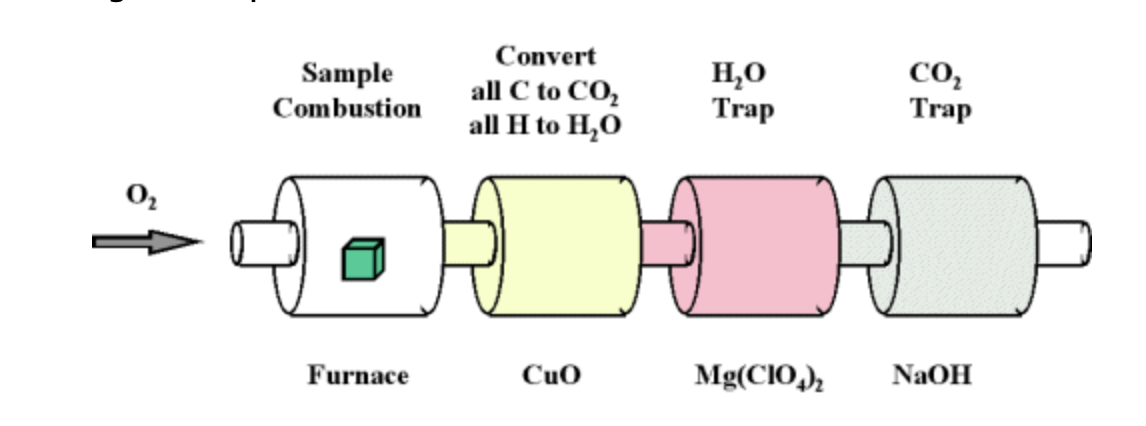Empirical and Molecular formula
- Empirical formula: simplest whole number ratio of atoms to each other
- Molecular formula: actual number of atoms in the particle
- Not necessarily the same thing
Using Combustion Data to Determine Empirical Formula
- The initial mass of the sample is known
- The increase in the mass of the magnesium perchlorate gives you the mass of water produced
- The increase in the mass of the sodium hydroxide gives you the mass of carbon dioxide produced
yeah i don’t get it either
oh i got it

- When a compound containing carbon and hydrogen is subject to combustion with oxygen in a special combustion apparatus, all the carbon is converted to and the hydrogen to
- The amount of carbon produced can be determined by measuring the amount of produced.
- This is trapped by the sodium hydroxide, and thus we can monitor the mass of CO2 produced by determining the increase in mass of the CO2 trap.
- Likewise, we can determine the amount of H produced by the amount of H2O trapped by the magnesium perchlorate.
Actual Method
- Calculate number of moles of water
- Determine number of moles of hydrogen atoms by multiplying moles of water by 2
- Calculate numbers of moles of carbon dioxide
- Determine moles of carbon atoms (moles of carbon atoms = moles of carbon dioxide)
- Calculate mass of hydrogen and carbon, and subtract that from the mass of the product to get the mass of oxygen
- Calculate moles of oxygen
- Profit (find lowest whole number ratio)